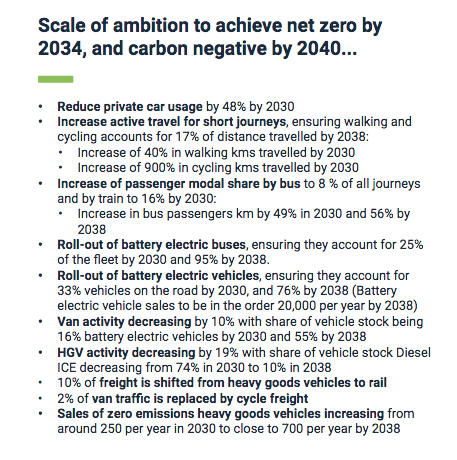
Consultants WSP carried out traffic surveys, and analysed the results of a Commonplace consultation that was held in Autumn 2022.
They reported in February 2023. North Yorkshire Council (NYC) published the WSP report 10 months later, in December 2023.
Traffic Surveys and Consultation

The traffic surveys showed that:
- 70% of the traffic in the Oatlands area is rat-running drivers
- weekday traffic volumes are 8,841 vehicles per day on Oatlands Drive
- 85th percentile traffic speeds at school start and finish times are around 33mph
There were 383 comments in the Commonplace consultation.
Most of the people who commented were unhappy with the existing situation and wanted change. Only 2-3% said ‘everything is fine’.

The top issues for residents were:
- Too many parked vehicles
- Too much traffic
- High traffic speeds
- Feels unsafe to cycle
- Idling vehicles
The top issues for people travelling to or through the area were:
- Feels unsafe to cycle
- Too many parked vehicles
- Too much traffic
- Hard to cross the road
- Feels unsafe to walk
64.2% of respondents said they would walk or cycle more if it was easier and safer.
Design Options
There are five proposed designs altogether.
Option 1 One-Way Proposal

Option 1 involves making Oatlands Drive one way for motor vehicles, creating space for cycle tracks and wider pavements.
The advantages are:
- Safe space for cycling, which conforms to the guidance
- Makes driving slightly less convenient, which could result in a reduction in rat-running traffic
WSP say this option was ‘not supported by local residents’, but in fact it has never been put to consultation.
It would be necessary to work out the implications for school buses.
Options 2 & 5 Do Minimum

Options 2 and 5 are similar to each other. The area would be made 20mph with traffic calming.
There would be no restrictions on motor vehicle movements and no dedicated cycle provision.
Cycling would be in mixed traffic, at current volumes of around 9,000 vehicles a day. That does not comply with the guidance.

It would be irresponsible of NYC to expect children to cycle to school in conditions that
are significantly worse than the minimum standards set out in government
guidance.
As WSP say of the Do Minimum options:
‘Does not significantly improve conditions for active travel. Unlikely to lead to mode shift towards walking and cycling’.
wsp comments on their do minimum options
Option 3 Segregated Cycle Tracks and Two LTNs

Notes on Option 3:
- Provides safe space for cycling on Oatlands Drive
- Does not deter use of Oatlands Drive as a through route for motor vehicles
- Space for the cycle tracks likely to be tight in the built-up southern section of Oatlands Drive; cycle tracks are only useful if they extend all the way along Oatlands Drive
- Building cycle tracks while maintaining two-way traffic would be more complicated and expensive than if Oatlands Drive was made one way
- Reallocation of space largely from walking rather than driving, which is wrong in principle
- The LTNs would reduce through traffic in the residential areas either side of Oatlands Drive, but these traffic volumes are not high
- The two parts of the proposal (cycle tracks and LTNs) do not have to go together
Option 4 Single Large LTN

Notes on Option 4:
- Ambitious design that prevents motor vehicles using the area as a through route
- Much lower traffic volumes and speeds on Oatlands Drive mean that dedicated space for cycling is not needed
- Would result in modal shift to walking and cycling
- Implications for school buses would need to be worked out
- Some opposition likely
Suggested Way Forward
The options should be considered in the context of national and local policies and strategies.
National policy in the second Cycling & Walking Investment Strategy is to make active travel the natural choice for shorter journeys.
The Routemap to Carbon Negative for the York & North Yorkshire region shows the need to increase cycling by 900% and decrease vehicle miles travelled by 48%, both by 2030, in order to decarbonise transport.

In that context, the design options that prioritise active travel and make driving less convenient should be preferred.
One strategy would be to put forward two or three ambitious options to consultation, with doing nothing (or next to nothing) not an option.
The options could be:
- Option 1 One-Way Proposal
- Option 4 Single Large LTN
- Option 3 Segregated Cycle Tracks and Two LTNs
The Do Minimum options should not be included in the consultation because, as WSP point out, they do not significantly improve the conditions for active travel, and are unlikely to lead to mode shift.
